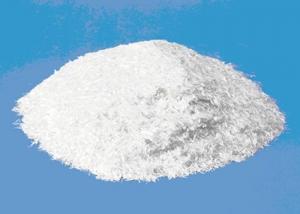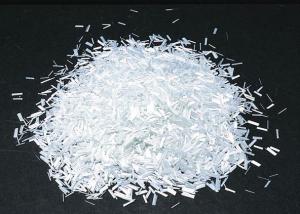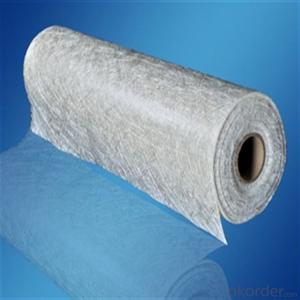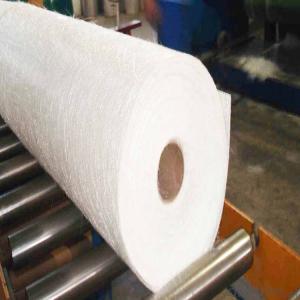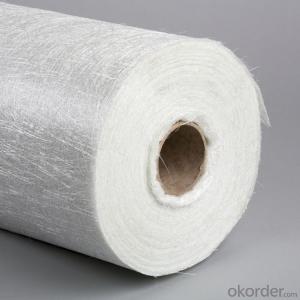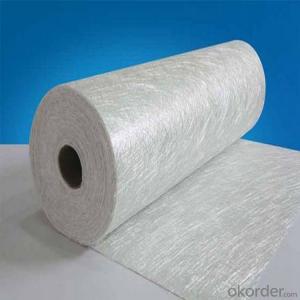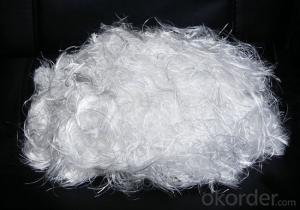E-Glass Fiber Chopped Strands For BMC
- Loading Port:
- China Main Port
- Payment Terms:
- TT or L/C
- Min Order Qty:
- 1 ton kg
- Supply Capability:
- 500 Tons Per Month kg/month
OKorder Service Pledge
OKorder Financial Service
You Might Also Like
Introduction of E-Glass Fiber Chopped Strands For BMC
E-Glass Chopped Strands for BMCare widely used in transportation,construction,electronics,chemical industry and light industry,such as the automotive parts,insulator,and switch boxes.
Product Features of E-Glass Fiber Chopped Strands For BMC
1.Low viscosity and excellent flowability of the BMC paste
2.Low static and low fuzz, fast and good dispersion in resins
3.Good processing and excellent mechanical properties
Packaging of E-Glass Fiber Chopped Strands For BMC
The product can be packed in bulk bags, heavy-duty box and composite plastic woven bags;
For example:Bulk bags can hold 500kg-1000kg each; Cardboard boxes and composite plastic woven bags can hold 15kg-25kg each.
Storage of E-Glass Fiber Chopped Strands For BMC
Unless otherwise specified, fiberglass products should be stored in a dry, cool and rain-proof area. It is recommended that the room temperature and humidity should be always maintained at 15ć-35ćand 35%-65% respectively.
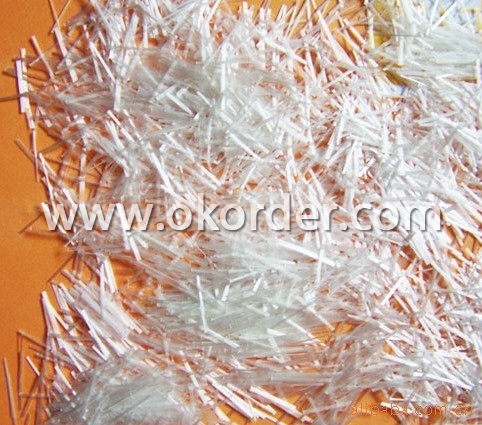
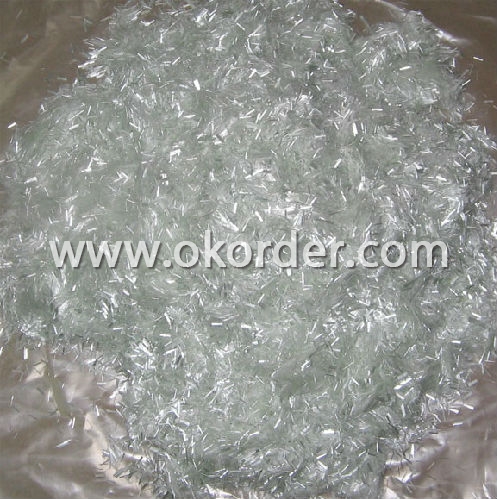
- Q:Is fiberglass chopped strand compatible with different coating methods?
- Indeed, different coating methods are compatible with fiberglass chopped strand. This reinforcement material is frequently employed in a range of coating processes, including, but not limited to, resin infusion, pultrusion, hand lay-up, and spray-up. Typically, the chopped strands are combined with a liquid resin to create a composite material that can be applied to a surface through the chosen coating method. The versatility of fiberglass chopped strand, thanks to its compatibility with different coating methods, makes it an invaluable asset to industries such as automotive, construction, aerospace, and marine.
- Q:Two-way stretch plastic geogrid
- High-intensity Geonet, Geotextile, Uniaxial Plastic Geogrid, Steel-plastic composite Geogrid, Composite geomembrane, and two double to the grid line, Maree Modoo axial loom, Fiberglass geogrid, Polyester geogrid, Geonet, two one-way grille production line, Dornier loom.
- Q:How is fiberglass chopped strand used in the sports and leisure industry?
- Fiberglass chopped strand is commonly used in the sports and leisure industry for its strength, durability, and lightweight properties. It is used in the manufacturing of various sporting equipment such as kayaks, canoes, surfboards, and skis. The chopped strands are typically mixed with resin and molded into the desired shape, resulting in a robust and high-performance product. Additionally, fiberglass chopped strand is also utilized in the production of leisure items like pool slides, water park structures, and recreational vehicles, providing a strong and long-lasting construction material.
- Q:How is the fiber content consistency of fiberglass chopped strand ensured?
- The fiber content consistency of fiberglass chopped strand is ensured through various quality control measures. Firstly, during the manufacturing process, the fiberglass strands are carefully selected and processed to ensure uniformity in length and diameter. This is crucial in maintaining consistent fiber content throughout the chopped strands. Secondly, the chopped strands go through a thorough inspection before they are packaged and sent for distribution. This inspection involves randomly sampling the strands and evaluating their fiber content using specialized equipment. Any strands that do not meet the required fiber content specifications are discarded, ensuring that only high-quality and consistent chopped strands are delivered to customers. Additionally, manufacturers often employ statistical process control techniques to monitor and control the fiber content consistency. This involves regularly sampling and testing the chopped strands at various stages of the production process. By analyzing the data obtained from these tests, manufacturers can identify any variations in fiber content and take corrective actions to maintain consistency. Furthermore, manufacturers may also conduct regular audits and quality checks of their production facilities to ensure that all processes and equipment are functioning properly. This helps to identify any potential issues that may affect the fiber content consistency and allows for prompt corrective measures to be taken. Overall, a combination of stringent quality control measures, inspections, statistical process control techniques, and regular audits ensures that the fiber content consistency of fiberglass chopped strand is maintained at a high level. This consistency is crucial in guaranteeing the performance and reliability of fiberglass products in various applications.
- Q:Can fiberglass chopped strand be used in the manufacturing of sports equipment?
- Sports equipment manufacturing can utilize fiberglass chopped strand, which is a versatile material offering numerous advantages. Firstly, its lightweight property enhances ease of use and maneuverability, making it ideal for tennis rackets, golf clubs, and hockey sticks. Secondly, its exceptional strength and durability enable the equipment to withstand the stress and impact it encounters during use, ensuring optimal performance over an extended period. Additionally, fiberglass chopped strand's corrosion-resistant nature safeguards against moisture and environmental factors, benefiting equipment exposed to water or harsh weather conditions like surfboards or kayaks. Moreover, its ability to be easily molded into various shapes and sizes allows for the customization of sports equipment, meeting the specific requirements of different sports and athletes. In conclusion, fiberglass chopped strand is a suitable material for sports equipment manufacturing, as it possesses lightweight, strength, durability, corrosion-resistance, and flexibility, enhancing performance and longevity, making it a popular choice in the industry.
- Q:Is fiberglass chopped strand resistant to fire?
- Yes, fiberglass chopped strand is resistant to fire. This is because fiberglass is made from spun glass fibers that are then coated with a fire-resistant resin. These fibers have a high melting point and are non-combustible, meaning they do not easily catch fire or spread flames. Additionally, fiberglass has a low thermal conductivity, which means it does not conduct heat well, further reducing its flammability. As a result, fiberglass chopped strand is often used in applications where fire resistance is required, such as in building materials, insulation, and protective clothing. However, it is important to note that while fiberglass is resistant to fire, it can still be damaged or weakened by prolonged exposure to high temperatures.
- Q:What are the fire insulation properties of fiberglass chopped strand?
- Fiberglass chopped strand is a widely used material for fire insulation due to its excellent properties. It is highly resistant to heat and can withstand high temperatures without losing its structural integrity. This makes it an effective barrier against the spread of fire and heat transfer. The main reason fiberglass chopped strand is effective as a fire insulation material is its composition. It is made up of fine glass fibers that are tightly packed together. These fibers are capable of trapping air within their structure, creating a layer of insulation. This trapped air acts as a buffer against the heat and prevents its transfer to the other side of the insulation. Additionally, fiberglass chopped strand is inherently non-combustible. It does not burn or support combustion, which is a crucial characteristic for fire insulation. This non-combustible property ensures that the material will not contribute to the spread of fire and provides an additional layer of safety. Furthermore, fiberglass chopped strand has a low thermal conductivity. This means that it is a poor conductor of heat, making it an efficient insulator. It can effectively slow down the transfer of heat through its structure, protecting the surrounding areas from the high temperatures of a fire. In summary, the fire insulation properties of fiberglass chopped strand are excellent. Its ability to resist high temperatures, non-combustible nature, and low thermal conductivity make it an effective material for preventing the spread of fire and protecting surrounding areas from heat damage.
- Q:Characteristics of GRC European lines
- Easy moulding, light weight, high strength. But more than 90% of the GRC line are not light and strength enough. It is only made by mortaring 1--2 grid reinforced mortar with rebar. Actually it is mortar. It is easily broken.Only a few years later, it will be broken, especially the steel in side will rust away to destroy the mortar.if installed in the air, it is more dangerous, just like installing a time bomb. The real GRC should be the precursor of alkali resistant fiber chopped with mortar and additives together and injecte into the mold by the injection equipment , then rolling layer by layer. The GRC main indicators are fiber contents are more than 5%, the fiber amount of GRC in fiber mesh cloth usually are less than 1%. In fact, the full name of GRC is glass fiber reinforced cement, the reinforcement materials of glass fiber just like the rebar of the reinforced concrete. What will happen if there are no rebar in the armoured concrete(it will be terrible).
- Q:How does the fiber surface treatment affect the performance of fiberglass chopped strand?
- The fiber surface treatment plays a crucial role in enhancing the performance of fiberglass chopped strands. It helps to improve the adhesion between the glass fibers and the matrix material in composite applications. By providing a chemically compatible interface, the surface treatment promotes better wetting and dispersion of the fibers, resulting in improved mechanical properties, such as tensile strength and impact resistance. Additionally, the treatment reduces fiber breakage during processing, leading to better overall performance of the fiberglass chopped strand in various applications.
- Q:What is the shelf life of fiberglass chopped strand?
- The shelf life of fiberglass chopped strand can vary depending on various factors such as storage conditions, packaging, and the specific type of fiberglass used. In general, fiberglass chopped strand has a relatively long shelf life and can typically be stored for several years if proper precautions are taken. When storing fiberglass chopped strand, it is important to keep it in a dry and well-ventilated area, away from direct sunlight and extreme temperatures. Moisture can cause the strands to stick together or degrade over time, so it is crucial to protect it from any sources of water or high humidity. Additionally, the packaging of fiberglass chopped strand plays a significant role in preserving its shelf life. It is recommended to keep the material in its original packaging or transfer it to tightly sealed containers, such as plastic bags or moisture-resistant drums, to prevent any moisture ingress. Different types of fiberglass chopped strand may have specific storage requirements, so it is advisable to refer to the manufacturer's guidelines or specifications for the particular product in question. By following the recommended storage conditions and packaging guidelines, the shelf life of fiberglass chopped strand can be extended, ensuring its optimal performance when used in various applications.
1. Manufacturer Overview |
|
|---|---|
| Location | Chongqing, China |
| Year Established | 1971 |
| Annual Output Value | Above US$ 50 Million |
| Main Markets | North America, Eastern Europe, Southeast Asia, Mid East, Eastern Asia |
| Company Certifications | ISO9001 |
2. Manufacturer Certificates |
|
|---|---|
| a) Certification Name | |
| Range | |
| Reference | |
| Validity Period | |
3. Manufacturer Capability |
|
|---|---|
| a)Trade Capacity | |
| Nearest Port | Chongqing |
| Export Percentage | 40%-50% |
| No.of Employees in Trade Department | 21-50 People |
| Language Spoken: | English |
| b)Factory Information | |
| Factory Size: | Above 2000,000 square meters |
| No. of Production Lines | Above 4 |
| Contract Manufacturing | |
| Product Price Range | Average |
Send your message to us
E-Glass Fiber Chopped Strands For BMC
- Loading Port:
- China Main Port
- Payment Terms:
- TT or L/C
- Min Order Qty:
- 1 ton kg
- Supply Capability:
- 500 Tons Per Month kg/month
OKorder Service Pledge
OKorder Financial Service
Similar products
New products
Hot products
Related keywords

